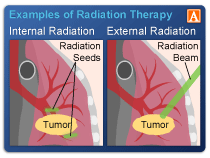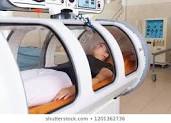
Diagnosed with Cancer? Your two greatest challenges are understanding cancer and understanding possible side effects from chemo and radiation. Knowledge is Power!
Learn about conventional, complementary, and integrative therapies.
Dealing with treatment side effects? Learn about evidence-based therapies to alleviate your symptoms.
Click the orange button to the right to learn more.
- You are here:
- Home »
- Blog »
- side effects ID and prevention »
- Bladder Damage
Bladder Damage

Both chemotherapy and radiation can cause bladder damage. The article linked below talks mainly about radiation and prostate cancer but it’s important to cite the many different types of side effects that can occur to one’s bladder when undergoing conventional cancer therapies.
I am a long-term cancer survivor. I underwent both chemotherapy (cytoxan/cyclophosphamide) and radiation to my pelvic region. I will never be sure of the cause of my bladder damage but the therapy discussed below sounds like it could heal or at least help my bladder.
What are the potential adverse events to the bladder caused by chemotherapy and radiation?
- Cystitis: This refers to inflammation of the bladder. Chemotherapy drugs such as cyclophosphamide and ifosfamide can irritate the bladder lining, leading to cystitis. Symptoms may include urinary frequency, urgency, pain or discomfort during urination, and blood in the urine.
- Hemorrhagic cystitis: Some chemotherapy drugs, particularly ifosfamide and high-dose cyclophosphamide, can cause severe irritation and bleeding in the bladder, leading to hemorrhagic cystitis. This condition is characterized by significant blood in the urine and can be quite painful.
- Radiation cystitis: Radiation therapy aimed at the pelvic area can damage the bladder tissue, leading to radiation cystitis. Symptoms may include urinary frequency, urgency, pain during urination, blood in the urine, and in severe cases, bladder wall thickening or ulceration.
- Bladder contracture: Radiation therapy can cause scarring and fibrosis of the bladder tissue, leading to decreased bladder capacity and contracture. This can result in urinary frequency, urgency, and difficulty emptying the bladder completely.
- Bladder cancer: While relatively rare, exposure to certain chemotherapy drugs and radiation therapy can increase the risk of developing secondary bladder cancer later in life. This risk is higher in patients who have received pelvic radiation therapy or certain alkylating agents.
- Urinary tract infections (UTIs): Chemotherapy and radiation therapy can weaken the immune system, making patients more susceptible to urinary tract infections. Symptoms may include urinary frequency, urgency, pain or burning during urination, and fever.
- Interstitial cystitis: This chronic condition involves inflammation of the bladder wall, leading to pelvic pain, urinary urgency, and frequency. While the exact cause of interstitial cystitis is unknown, some patients report the onset of symptoms following chemotherapy or radiation therapy.
While it’s important to discuss therapies shown to possibly heal bladder damage, I think it’s also important to point out therapies shown to reduce or completely prevent bladder damage from chemo or radiation.
I believe that all cancer patients who undergo radiation therapy should, upon completion of their radiation, undergo hyperbaric oxygen therapy (HBOT). HBOT has been shown to heal radiation-induced damage.
According to the top article linked below, the most effective therapy for the prevention of cytoxan-induced cystitis is to drink lots of water- before and after cytoxan administration.
Do you have and irritable bladder? Have you undergone either/or radiation or cytoxan therapy recently? If you would like to learn more about bladder damage send me an email and I will reply to you ASAP- David.PeopleBeatingCancer@gmail.com
Good luck,
David Emerson
- Cancer Survivor
- Cancer Coach
- Director PeopleBeatingCancer
Hemorrhagic Cystitis Treatment & Management
“The best treatment of hemorrhagic cystitis is prevention, especially with cyclophosphamide-induced hemorrhagic cystitis. Adequate hydration to induce brisk diuresis, continuous bladder irrigation, and prophylactic dosing of mesna are important preventive measures…”
Radiation-induced cystitis treated with hyperbaric oxygen therapy (RICH-ART): a randomised, controlled, phase 2–3 trial
Findings- Of 223 patients screened between May 9, 2012, and Dec 20, 2017, 87 patients were enrolled and randomly assigned to either hyperbaric oxygen therapy (n=42) or standard care (n=45). After excluding eight patients who withdrew consent directly after randomisation (one in the hyperbaric oxygen therapy group and seven in the standard care group), 79 were included in the intention-to-treat analyses (n=41 in the hyperbaric oxygen therapy group, n=38 in the standard care group).
Interpretation- Our results suggest that hyperbaric oxygen therapy relieves symptoms of late radiation cystitis. We conclude that hyperbaric oxygen therapy is a safe and well tolerated treatment…”
Pitt and UPMC Collaboration Leads to Innovative Surgery for People with Radiation-Damaged Bladders
“An interdisciplinary team of researchers and physicians from the University of Pittsburgh School of Medicine and UPMC on April 3 performed the first in-human adipose-derived stem cell (ADSC) injection into a patient’s bladder for treatment of radiation-induced fibrosis.
Radiation treatment for prostate cancer can cause damage that leads to bladder leakage and incontinence, and there is no effective treatment. The Pitt team had the innovative idea of using ADSC injections, which involve taking stem cells from the patient’s own fat tissue. They have been successfully used in clinical trials for other conditions but do not have approval from the Food and Drug Administration (FDA), so the surgery was performed under what is known as FDA expanded access, or compassionate use…
Adipose (or fat) tissue yields a wealth of adult stem cells, which, when separated from the fat tissue, can be used for therapeutic purposes. Because they are the patient’s stem cells, there is no risk of rejection. ADSC are not embryonic stem cells.
“ADSC are like little chemical factories that promote tissue healing and regeneration,” says Rubin. “They secrete growth factors in the area that induce new blood vessel growth, new vascularity, and help to remodel scar tissue into more elastic tissue with very few risks.”
Rubin notes that fat-grafting techniques—surgically injecting patients’ own fat products from one part of their body to another—as used in this surgery are common, well-recognized procedures used to soften tissues that have been scarred from radiation injury…
Radiation treatment is a commonly used treatment for cancer, especially for prostate cancer. It can also cause side effects years after the treatment. Radiation-induced fibrosis in the bladder can cause overactivity, incontinence, leakage and lower urinary tract symptoms. Rusilko says treatment for radiation-induced fibrosis in the bladder is limited to oral medication or Botox injections, and they do not help with structural damage to the bladder…”


